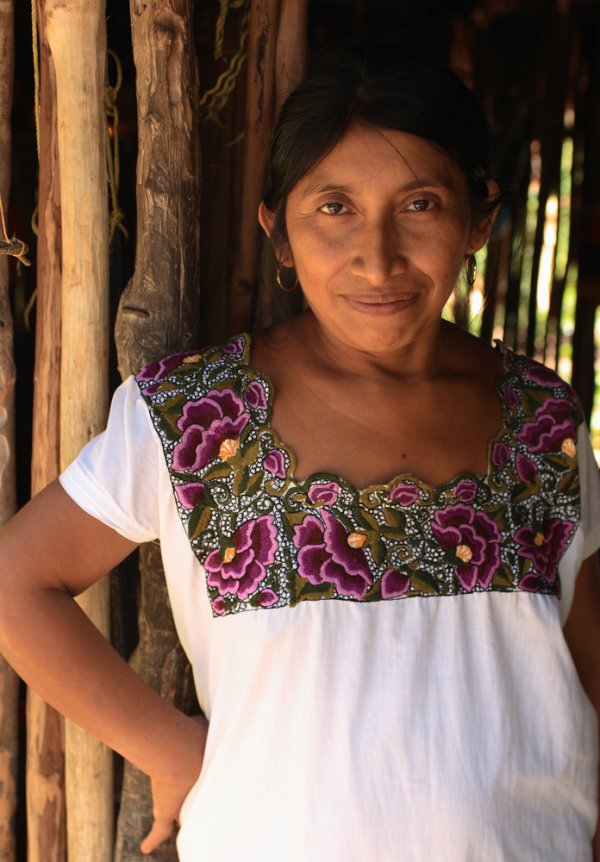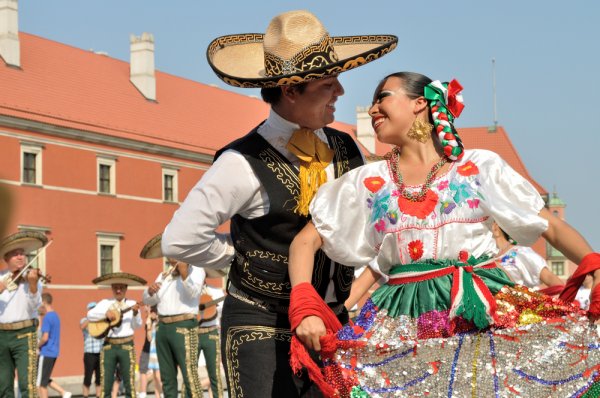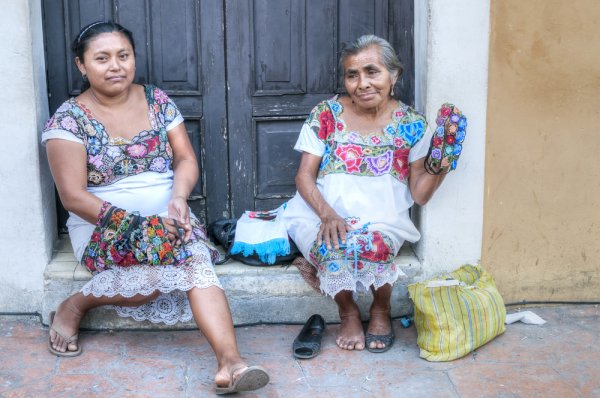Culture and Society: Women in Culture
General
The Mexican nation encompasses a contrast of affluence and poverty, natural splendor and urban blight. Social attitudes towards Mexico’s female citizens mirror such contrasts. Some Mexicans confine women to the traditional role of homemaker, and others embrace the growing presence of women in all social and economic spheres. In both cases, Mexican society reveres the concept of the mother and relates mothers to the Christian Madonna figure (a symbol both of chastity and selfless support of one’s children). In the first case, Mexican men believe women’s selfless devotion to home and family warrants women an almost sacred place in the family, but they hold themselves to a different standard, maintaining absolute control over the family while practicing marital infidelity (the basic tenets of machismo). Those with a more modern attitude delight to see women holding full-time employment positions and assuming positions of authority within and outside of the family.
The role of women in modern, urban Mexican society has undergone a profound change due to increasing numbers of women attending school in general, graduating from high school, and obtaining college degrees. There has also been rapid growth in the female work force in Mexico, with more women in their early 20s taking jobs before starting families. Nearly half of the country's workforce are women. Additionally, the early years of the 21st century saw women's enrollment rates in medical schools increasing and even surpassing male enrollment.
The country's National Congress has about 50 percent representation by women, and women have served on the Supreme Court and as Cabinet members. Women are active in business, especially as owners of retail businesses.
The Mexican Constitution and labor laws provide that both women and men shall have equal pay for equal work under similar conditions, but in practice, society pays women less. Women also hold lower-status jobs than men. Rural women suffer far higher rates of poverty, malnutrition, inadequate health care, and maternal and infant mortality.
In Mexico, a very socially and economically stratified country, access to education and employment opportunities differs, according to women’s ethnicity and class. The small numbers of white women from the upper classes have a distinct advantage over the large population of mestizo (mixed ethnicity) and native Amerindian citizens.
No dress code restrictions exist for women in Mexico. Women generally wear European style clothing.
Legal Rights
The Mexican Constitution guarantees the complete legal equality of men and women. Mexican women have had the right to vote in national elections and to run for office since 1953. Women also have the right to drive cars, to inherit, own, or possess property, and the right to hold assets separate from their husbands.
Mexican women have the right to initiate divorces on many grounds, including adultery, cruel treatment, or simply the mutual consent of both spouses. Custody of children can be mutually decided by the couple, or it can be granted by judicial decision. Abortion, a criminal offense in Mexico, remains illegal. However, laws allow abortion in cases of rape or in order to save the pregnant woman’s life. The debate on further liberalization of the abortion laws remains ongoing.
Education
Mexico provides free and compulsory education for all its citizens until 15 years of age. The federal government, the states, and municipalities, facilitate preschool, primary, and secondary education, with emphasis on vocational and technical training. In Mexico, coeducational as well as single-sex educational institutions exist.
The average literacy rate is 95 percent. Women’s average educational level is gradually improving, and women now comprise almost half of college students. Increasingly, many urban and rural Mexican women enter the job market on equal terms with men.
Dating, Marriage and Family
Mexican women choose their own partners, mostly within their societal class, and get married after a period of formal engagement. Boys and girls start dating in their teens, usually with the consent of parents. The legal age for marriage is 18 in Mexico. Boys aged 16 and girls aged 14 can marry with their parents’ permission.
Typically, a Mexican wife adds her husband’s surname after marriage, so in case of marriage to a Martínez, she adds de Martínez to her first maiden surname. The culture accepts cohabitation, but rejects polygamy, which remains illegal. Some married women who are barren fear being divorced, maltreated, and taunted by their in-laws.
Traditionally, Mexican women take charge of all household and religious matters, and the male, the jefe de familia (chief of the family), wields the authority and responsibility to make critical social and economic decisions. In the case of divorce, the custody of children can be decided by the couples themselves, or it can be left to the decision of the courts. The courts grant the amount of child maintenance required. Children 14 years of age and older can choose the parent with whom they would like to reside after the couple separates.
Health
Mexico spends far less of its gross domestic product on the health care of its citizens than comparable countries do. Health insurance remains rare, with only half of citizens having some form of coverage. Public healthcare facilities stay chronically under-funded, and access to private, general and emergency medical care costs the average person a great amount. Preventive healthcare measures, however, work to provide good and basic health services, including granting food supplements to children below five years of age and to women. However, access to maternal health care remains limited in the countryside due to the shortage of trained personnel. The infant mortality rate in Mexico is about 13 deaths per 1,000 live births.
With the best national family planning programs available in Mexico, women make their own healthcare decisions, including those regarding contraception, and thus help in controlling the country’s population growth. Contraceptive use differs in Mexico, depending on education level and geography (with higher usage among the urban educated).
Statistical sources include:
Inter-Parliamentary Union, Women in National Parliaments
US Central Intelligence Agency, World Factbook
World Bank, Databank
Copyright © 1993—2024 World Trade Press. All rights reserved.

 Mexico
Mexico 







